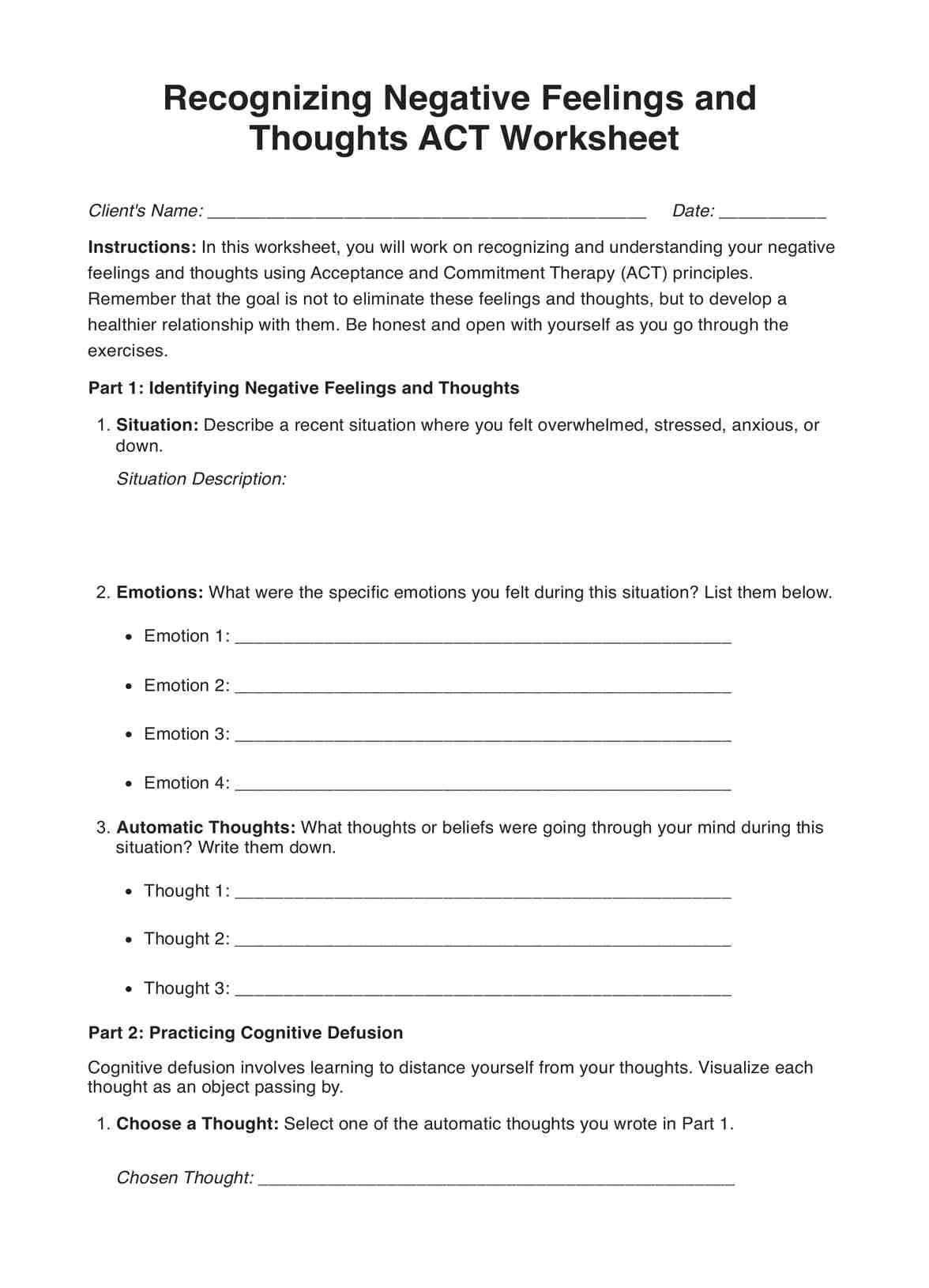This worksheet aids individuals in recognizing their anxiety-related thoughts and emotions, allowing them to develop a healthier relationship with them. Cognitive defusion and values-based commitment empower individuals to confront and manage anxiety while taking action aligned with their values.

Recognizing Negative Feelings and Thoughts ACT Worksheet
Enhance emotional awareness with the Recognizing Negative Feelings and Thoughts ACT Worksheet, a valuable tool for mental health support in healthcare.
Recognizing Negative Feelings and Thoughts ACT Worksheet Template
Commonly asked questions
This worksheet suits healthcare practitioners, therapists, counselors, and individuals seeking self-improvement. It's versatile and can be adapted for various therapeutic and personal development contexts.
While it's a valuable tool, this worksheet is best used as part of a comprehensive therapeutic approach. It can complement other therapeutic modalities and strategies to effectively address anxiety or other mental health concerns.
EHR and practice management software
Get started for free
*No credit card required
Free
$0/usd
Unlimited clients
Telehealth
1GB of storage
Client portal text
Automated billing and online payments











